11 Gorgeous Ground Covers That Are Perfect Lawn Alternatives
Looking for an easy way to replace your lawn with something beautiful and low-maintenance? Ground cover plants are a perfect solution, offering vibrant colors, texture, and functionality while reducing the need for constant mowing. These plants spread quickly, fill in spaces efficiently, and are great for areas where grass struggles to thrive. Whether you’re looking to enhance shaded spots or create a more eco-friendly garden, these options will help you achieve a lush, attractive landscape with minimal effort.
This post may contain affiliate links, which helps keep this content free. Please read our disclosure for more info.
Creeping Thyme
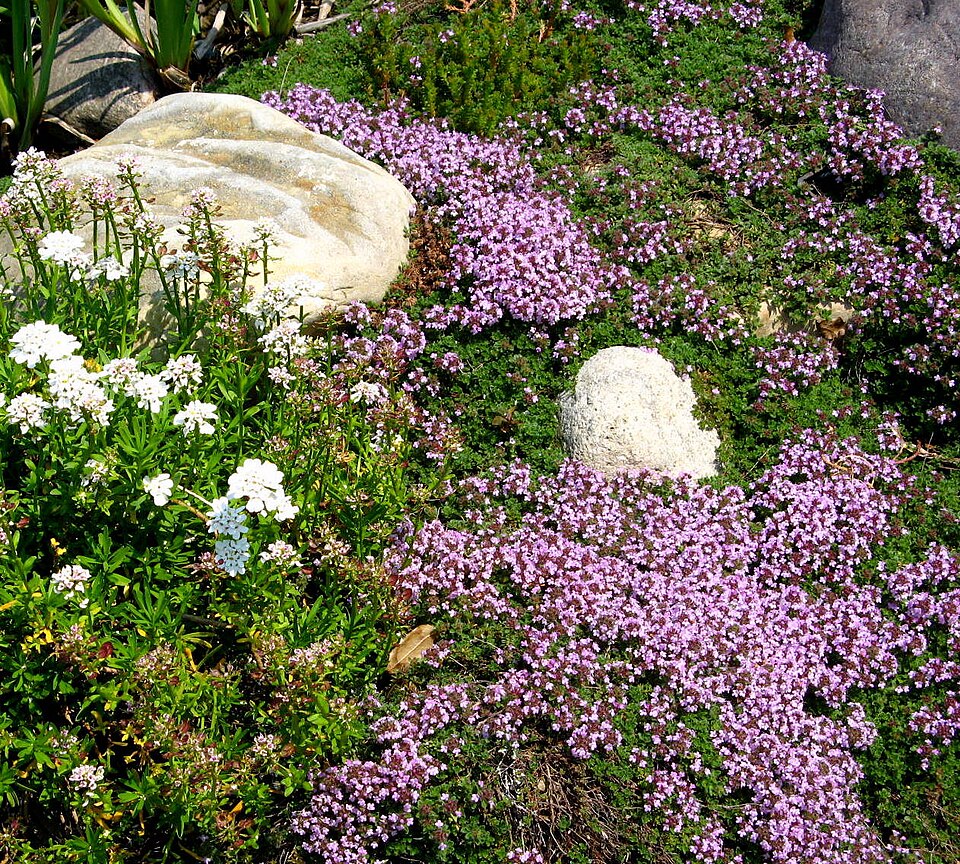
Creeping thyme is a versatile ground cover plant known for its ability to thrive in dry, poor soils with minimal care. It forms dense mats that prevent weeds from establishing while providing a pleasant, natural fragrance. The plant is especially popular in areas where grass struggles to grow, such as between stepping stones or in sunny, well-drained garden beds. Creeping thyme’s tiny purple flowers bloom in early summer, attracting pollinators like bees and butterflies, adding both beauty and ecological value to the landscape.
Once established, creeping thyme requires little water and grows well in low-maintenance environments, making it an excellent grass replacement. It can handle light foot traffic and has a soft texture underfoot, perfect for garden pathways. The plant’s dense foliage helps keep the ground cool and suppresses the growth of weeds, while its drought tolerance ensures that it does not require constant care, making it a great choice for gardeners looking for a beautiful yet low-maintenance ground cover.
Creeping Jenny
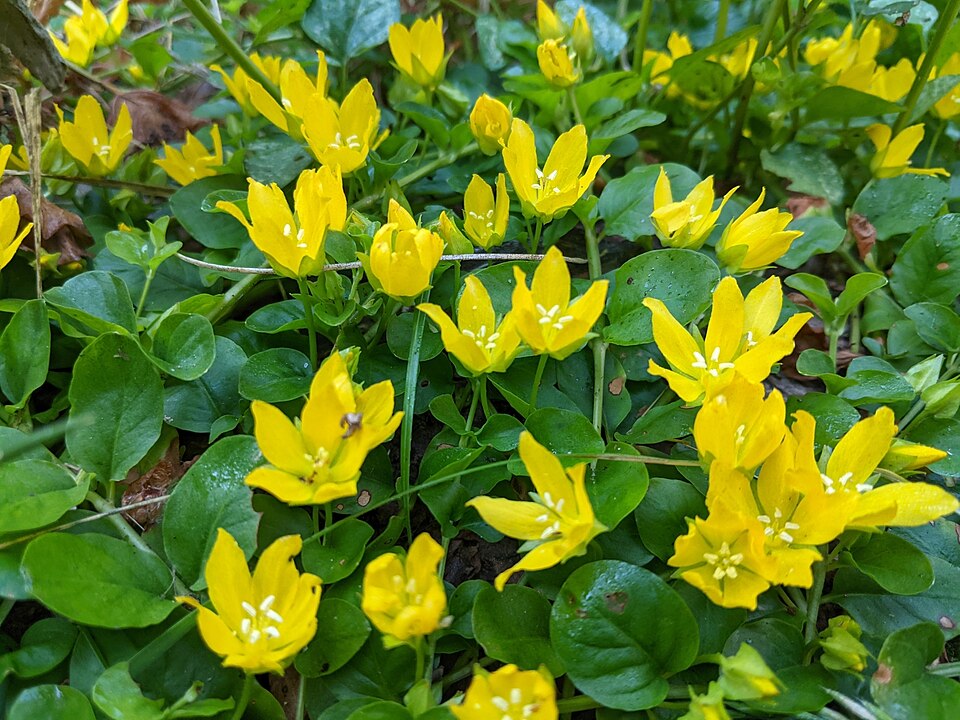
Creeping Jenny is a vibrant ground cover plant that offers a burst of green or golden color throughout the year. Its fast-growing nature allows it to spread quickly, covering large areas with minimal effort. Creeping Jenny does well in both sun and partial shade, adapting to a variety of conditions and adding a splash of brightness to your garden. Its small, round leaves form dense mats, making it a great option to replace grass in areas that need constant maintenance or those that are difficult to mow.
Apart from its beauty, Creeping Jenny also serves a functional purpose in garden landscapes. It is effective at preventing soil erosion, especially on slopes, and its dense growth crowds out weeds, making it a natural and low-maintenance solution. This plant requires very little water once established and grows well in a variety of soils. With its ability to quickly spread and provide year-round color, Creeping Jenny is an excellent choice for gardeners seeking an attractive and low-maintenance grass alternative.
Ajuga (Bugleweed)
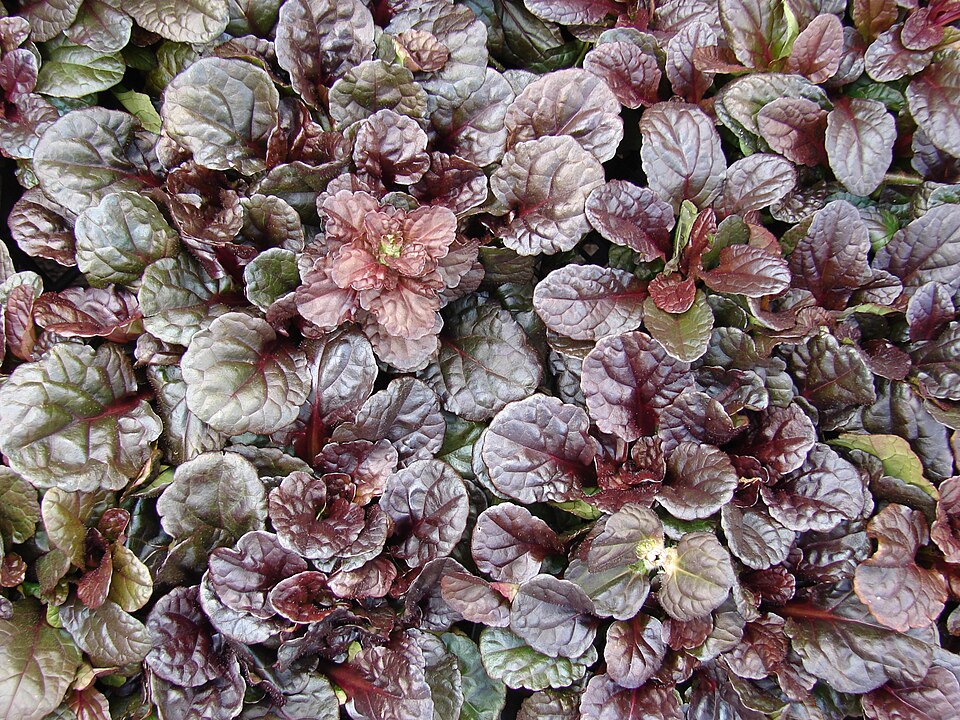
Ajuga, also known as bugleweed, is a hardy perennial ground cover that thrives in both full sun and shaded areas. It is known for its fast growth and the striking blue to purple flowers that appear in spring. Ajuga’s leaves vary in color from deep green to bronze, adding rich texture and visual interest to any landscape. Its ability to thrive in various soil types, including dry and nutrient-poor soils, makes it an excellent choice for areas where traditional grass may not grow well.
Ajuga spreads quickly, filling in spaces between rocks, garden paths, or even shaded garden beds. The dense growth of this plant helps to suppress weed growth naturally, reducing the need for regular weeding. Additionally, Ajuga requires very little maintenance once established. A light pruning after flowering keeps it tidy, and it has a low tolerance for foot traffic, making it best suited for areas that are not regularly walked on. Ajuga is perfect for gardeners looking for a beautiful, low-maintenance ground cover.
Sedum (Stonecrop)
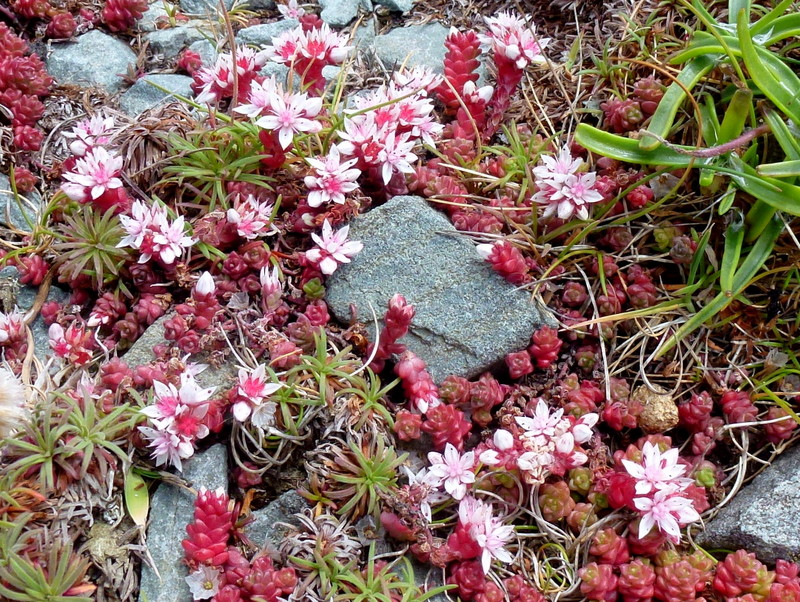
Sedum, commonly known as stonecrop, is a hardy, drought-tolerant succulent that thrives in poor, dry soils. This plant is perfect for areas where water conservation is a priority. Sedum’s fleshy leaves store water, allowing it to withstand long periods without rainfall. The plant’s spreading growth habit creates dense mats that naturally suppress weed growth, making it an excellent alternative to traditional grass lawns.
Sedum produces small, star-shaped flowers in late summer and early fall, with colors ranging from pink to yellow, depending on the variety. These flowers attract pollinators, such as bees and butterflies, further enhancing the beauty and ecological benefits of your garden. Once established, Sedum requires little attention, needing only occasional watering during extremely dry periods. Its low-maintenance nature, combined with its attractive appearance and drought tolerance, makes it an ideal ground cover for homeowners looking to reduce their lawn care efforts.
Irish Moss (Sagina subulata)
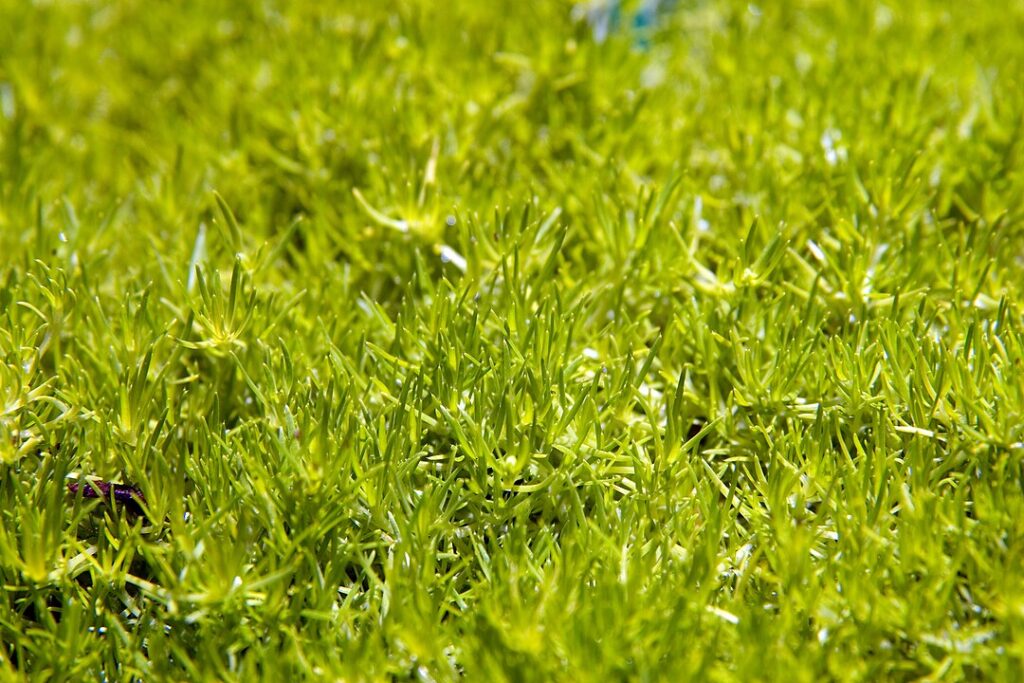
Irish Moss is a dense, moss-like ground cover that thrives in cool, moist conditions, making it an ideal choice for shaded areas or gardens that do not receive intense sunlight. This plant forms a tight carpet of tiny, green leaves that spread rapidly to fill gaps, making it a great alternative to grass in garden beds, around stones, or in between stepping stones. During spring and summer, Irish Moss produces tiny white flowers that add a delicate touch to the ground cover.
Irish Moss is low-maintenance once established and requires only occasional watering to stay lush. Its dense growth helps to suppress weeds, making it an excellent option for gardeners who want to replace traditional grass with something that requires less upkeep. This ground cover works particularly well in cooler climates or shaded areas where grass may struggle to grow. With its ability to spread quickly and provide a lush, green carpet, Irish Moss offers a visually appealing and functional alternative to grass.
Pachysandra
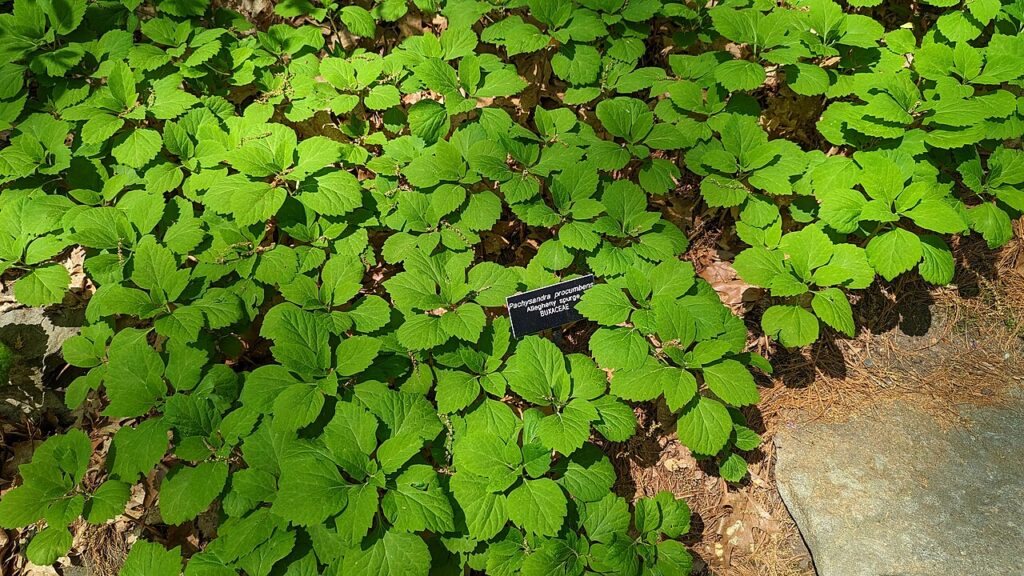
Pachysandra is a hardy evergreen ground cover known for its ability to thrive in shaded, moist environments. It forms dense, dark green mats that provide year-round interest, even during the colder months. This plant is particularly useful for areas where grass struggles to grow due to a lack of sunlight or moisture, such as beneath trees or along shaded fences. Pachysandra is also an excellent choice for controlling soil erosion on slopes and hills.
Once established, Pachysandra is very low-maintenance, requiring minimal care beyond occasional trimming to maintain its shape. It spreads quickly, forming a dense carpet that suppresses weed growth naturally. Pachysandra thrives in well-drained soils but can tolerate a variety of conditions, making it a versatile choice for replacing grass in challenging areas. Its evergreen foliage ensures that your garden remains vibrant year-round, while its resilience to foot traffic adds practicality to its appeal.
Vinca Minor (Periwinkle)
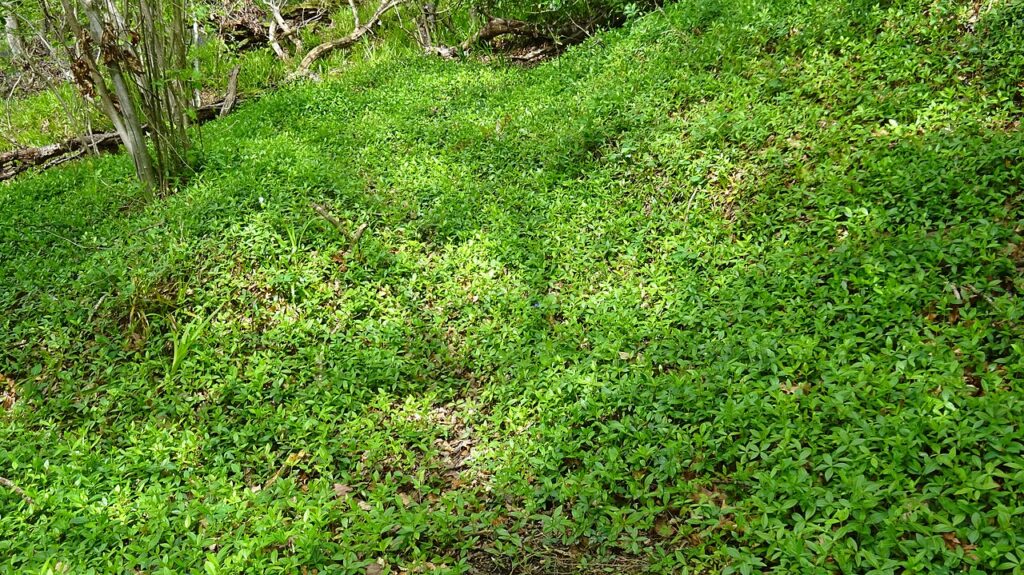
Vinca Minor, or periwinkle, is an evergreen ground cover that grows well in shaded or partially shaded areas. It features glossy green leaves and attractive blue or purple flowers that bloom in the spring, offering both beauty and color throughout the growing season. Vinca Minor spreads quickly, covering large areas with minimal effort, and its trailing vines help to crowd out weeds and reduce the need for lawn maintenance.
This ground cover is ideal for areas where grass struggles to grow, particularly under trees, along fences, or in other shaded spots. Once established, Vinca Minor is low-maintenance, requiring only occasional watering and light trimming to keep it in shape. Its dense foliage helps reduce soil erosion, and its evergreen nature ensures that your garden remains lush and green even during the colder months. Vinca Minor is a great choice for gardeners seeking an easy-to-care-for and visually pleasing alternative to grass.
Lamium (Dead Nettle)
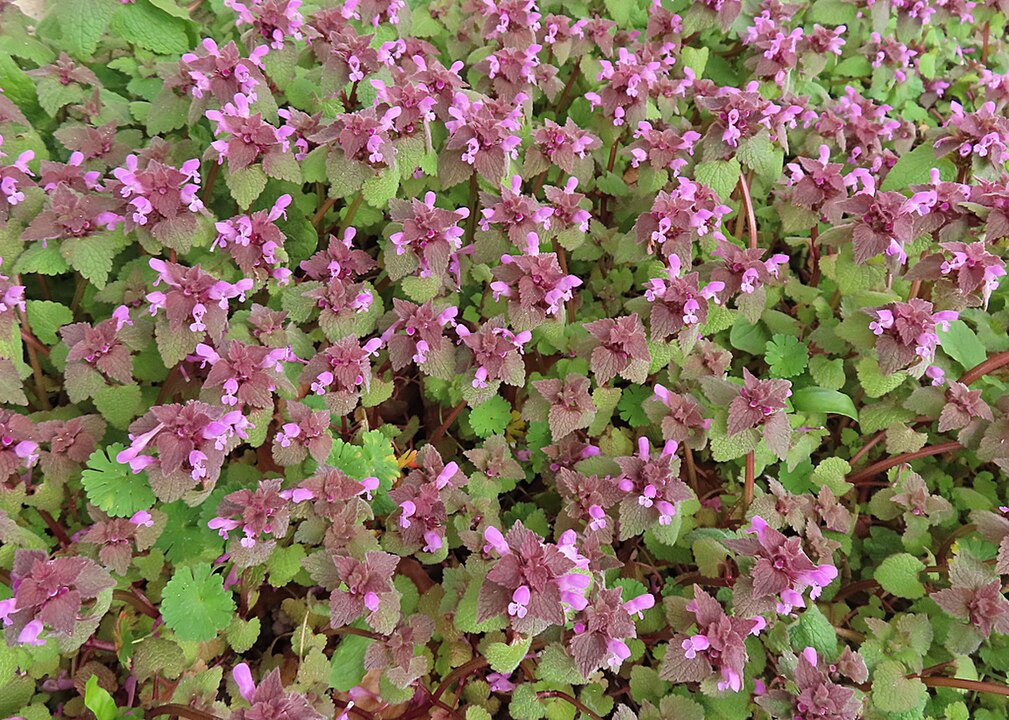
Lamium, also known as dead nettle, is a low-growing ground cover plant that thrives in shaded and semi-shaded areas. It has vibrant foliage that comes in various shades, from silver to green, with occasional purple or pink flowers in spring. Lamium spreads quickly to form dense mats, making it an excellent choice for areas where grass is difficult to maintain, such as under trees or in low-light spaces.
Lamium is not only beautiful but also highly effective at suppressing weeds. Its ability to thrive in poor soil and shade, combined with its low-maintenance nature, makes it a valuable ground cover option. Once established, it requires minimal care beyond occasional trimming to maintain its form. Lamium is perfect for gardeners looking for an attractive, low-maintenance ground cover that can replace traditional grass and help keep their garden looking neat and tidy.
Ground Morning Glory (Convolvulus sabatius)
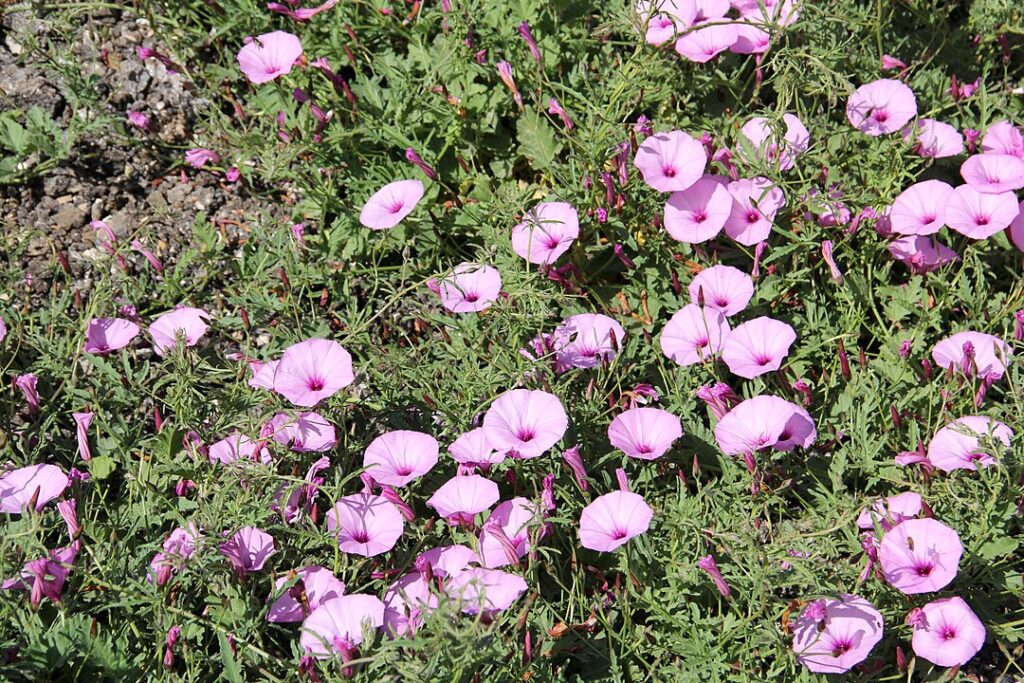
Ground morning glory is a fast-growing, trailing plant known for its vibrant blue or purple funnel-shaped flowers. Unlike its climbing relatives, this variety spreads across the ground, making it a perfect alternative to grass. Ground morning glory thrives in full sun to partial shade and is a great choice for filling in gaps in garden beds or along pathways, where it can quickly cover large areas.
The plant’s trailing habit helps it form dense mats, suppressing weeds and providing a colorful carpet for your garden. It grows well in various soil types and can tolerate moderate drought once established. Ground morning glory requires minimal care, needing only occasional watering and light pruning to keep it tidy. Its abundant blooms and rapid spread make it an excellent option for low-maintenance, grass-free landscaping.
Clover (Trifolium repens)
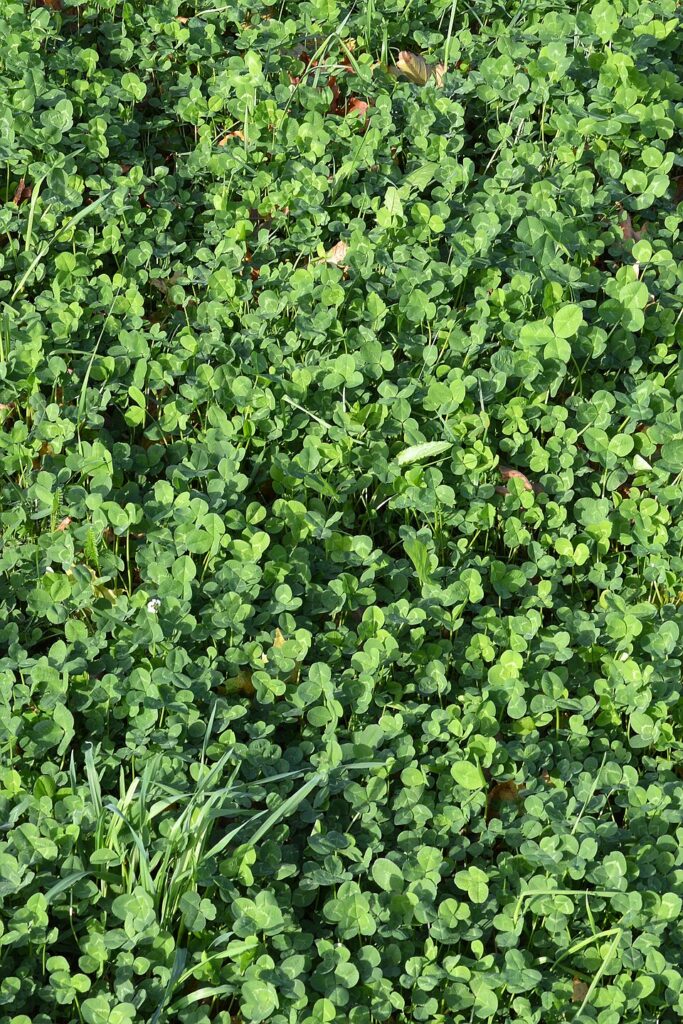
Clover is a fast-growing, hardy plant often used as an alternative to traditional grass lawns. It requires less water and fewer nutrients than grass, making it a more environmentally friendly option for replacing your lawn. Clover’s dense growth habit prevents weeds from taking hold, and its low-growing nature reduces the need for frequent mowing.
In addition to being easy to care for, clover offers other benefits, such as fixing nitrogen in the soil, which improves soil health. It is also a great choice for attracting pollinators, including bees, with its small, white flowers. Clover is highly tolerant of foot traffic, making it a suitable replacement for lawns that are frequently walked on. Its drought tolerance and low-maintenance requirements make it an ideal choice for those seeking an eco-friendly alternative to grass.
Liriope (Monkey Grass)
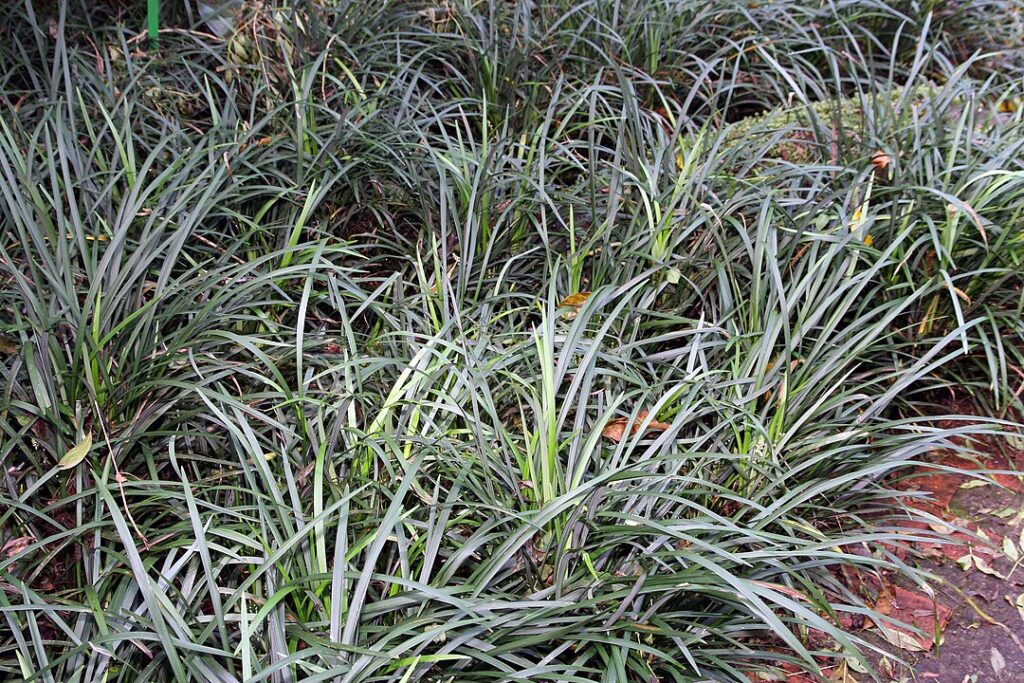
Liriope, or monkey grass, is a hardy perennial that thrives in both sun and shade. Its grass-like foliage forms dense clumps, making it an excellent ground cover option for areas where traditional grass struggles. Liriope also produces spiky purple or white flowers in late summer to early fall, providing additional visual interest to your garden.
This ground cover is perfect for low-maintenance gardeners, as it requires very little attention once established. Liriope grows well in a variety of soil conditions and is drought-tolerant, making it a suitable option for dry or low-water landscapes. Its dense growth habit prevents weeds from taking root, and it can handle moderate foot traffic, making it ideal for walkways or between garden beds.
This article originally appeared on Avocadu.
